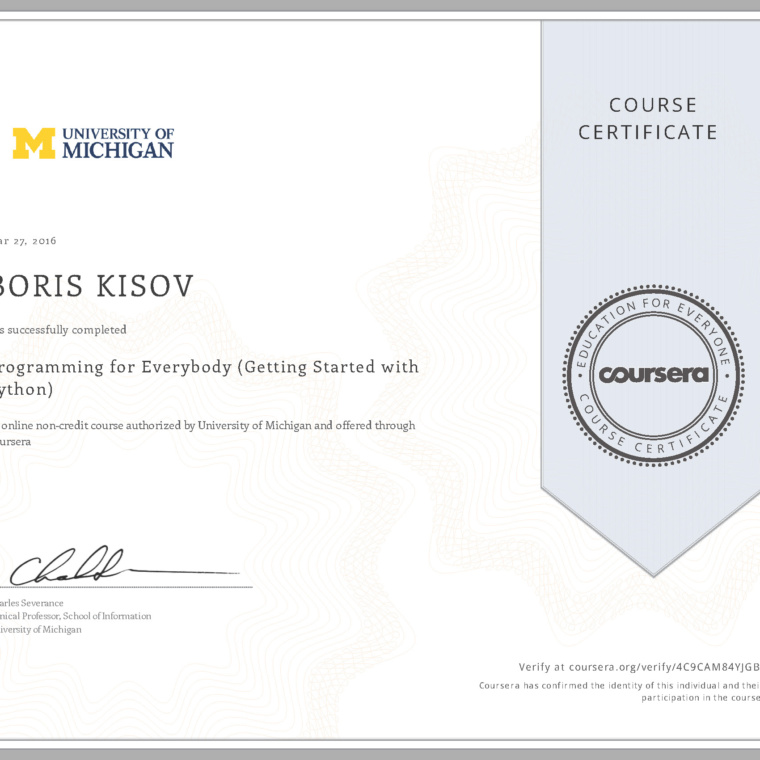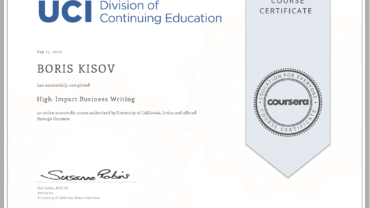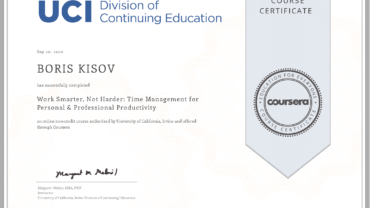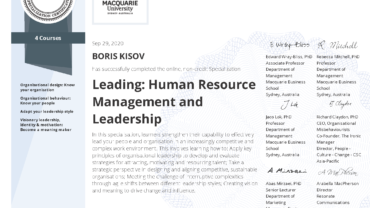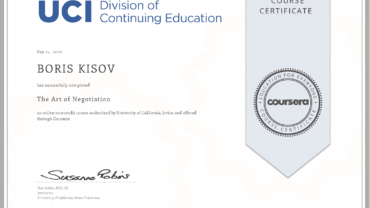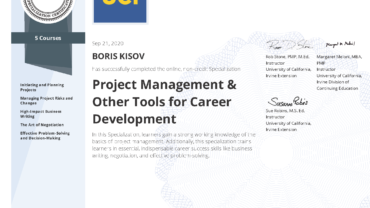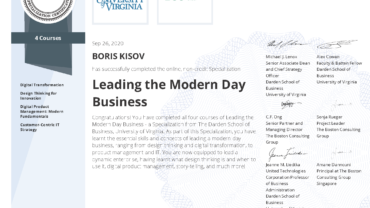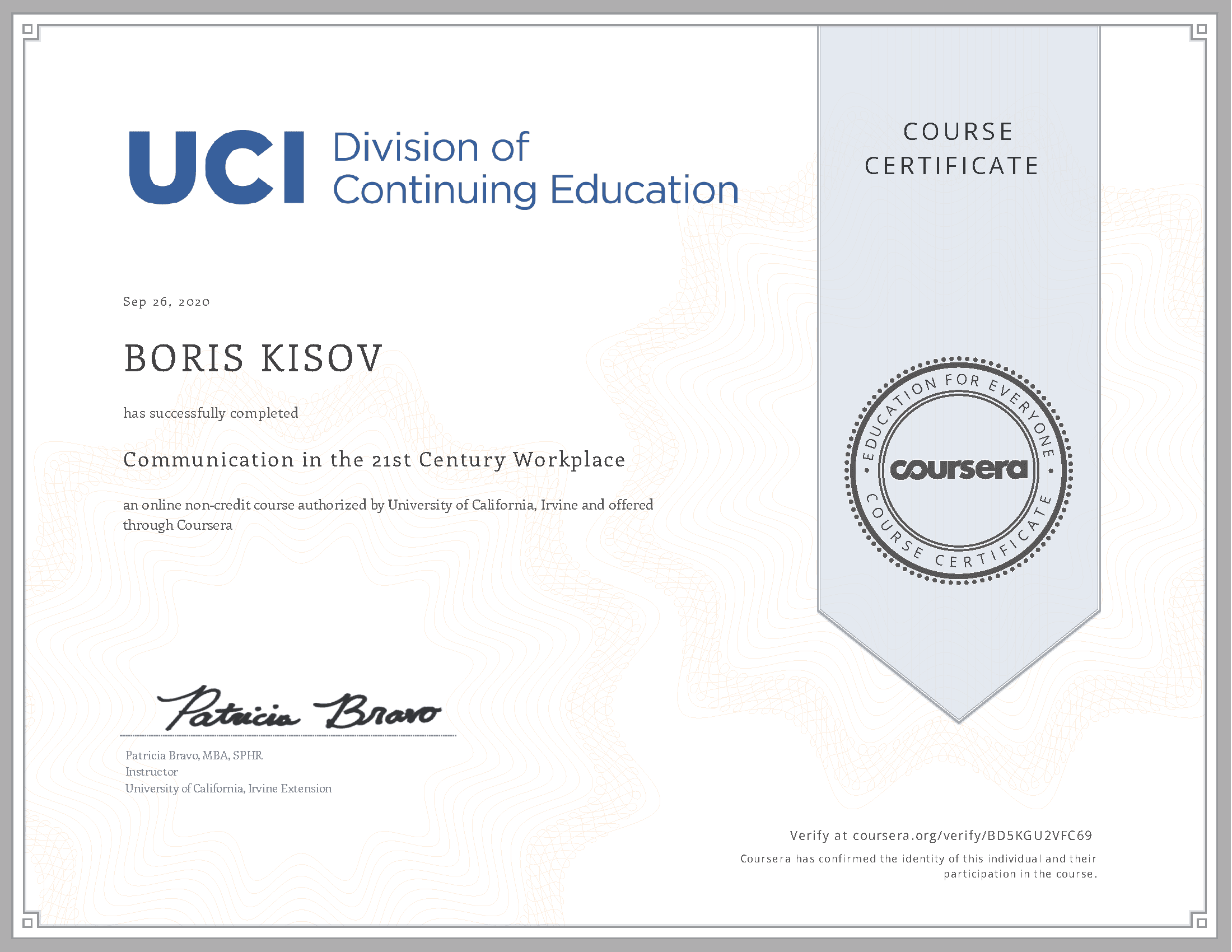
Communication in the 21st Century Workplace
Communication in the 21st Century Workplace– Certificate
UNIVERSITY OF CALIFORNIA, IRVINE – Communication in the 21st Century Workplace
LEARN
Understand the benefits of effective communication in the workplace
Identify and solve common obstacles to effective communication
Decipher the communications styles of executive managers
Apply proven techniques for effective conference calls and webinars
About this course
In today’s rapidly changing business environment, employees at all levels are being asked to complete more tasks, meet more deadlines, take on more responsibilities and adapt to new changes. Added to these challenges is the ever-changing diversity of the workplace, where employees grapple with generational, gender, age and cultural differences. Communication, both verbal and non-verbal, is at the center of everything we do and say, and it is especially important in the 21st century workplace. The good news is that communication is a learned skill and can be improved with proper training. The focus of this course is to increase students’ awareness of communication in the workplace and add new interpersonal skills with the end result of becoming a more competent communicator overall. Target areas include: communication processes and functions, behavior patterns, perception as reality, verbal and non-verbal signals and behavior, trust, assertiveness, tact, anger management, constructive criticism and feedback, conflict resolution, team building , leadership, interviews and more effective communication through technology (email, Skype, text messages, etc.).
At the end of the course, you will be able to:
1. Define communication and your role in the workplace.
2. Describe the benefits of effective communication in the workplace.
3. Identify and explain the most common audiences and methods of communicating with each audience.
4. Identify and remove common barriers to effective communication.
5. Briefly describe the 5-step technique and explain its usefulness in communicating with your manager.
6. Discuss the best communication approaches and techniques to deliver bad news to your boss.
7. Describe ways to build positive relationships with your employees.
8. Discuss methods for deciphering the communication styles of senior managers.
9. Discuss methods for identifying characteristics and driving forces of senior managers.
10. Discuss methods to persuade top management.
11. Identification of best practices for successful work with virtual / remote teams.
12. Apply proven methods for effective conference calls and webinars.University of California, Irvine
Since 1965, the University of California, Irvine has combined the strengths of a major research university with the bounty of an incomparable Southern California location. UCI’s unyielding commitment to rigorous academics, cutting-edge research, and leadership and character development makes the campus a driving force for innovation and discovery that serves our local, national and global communities in many ways.
Boris Kisov

Innovation, IT & Management
10+ years of initiating and delivering sustained results and effective change for companies across a wide range of industries including
innovation, enterprise software, digital marketing, start-ups, advertising technology, e-commerce and government.


